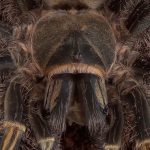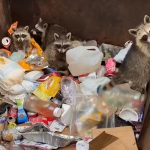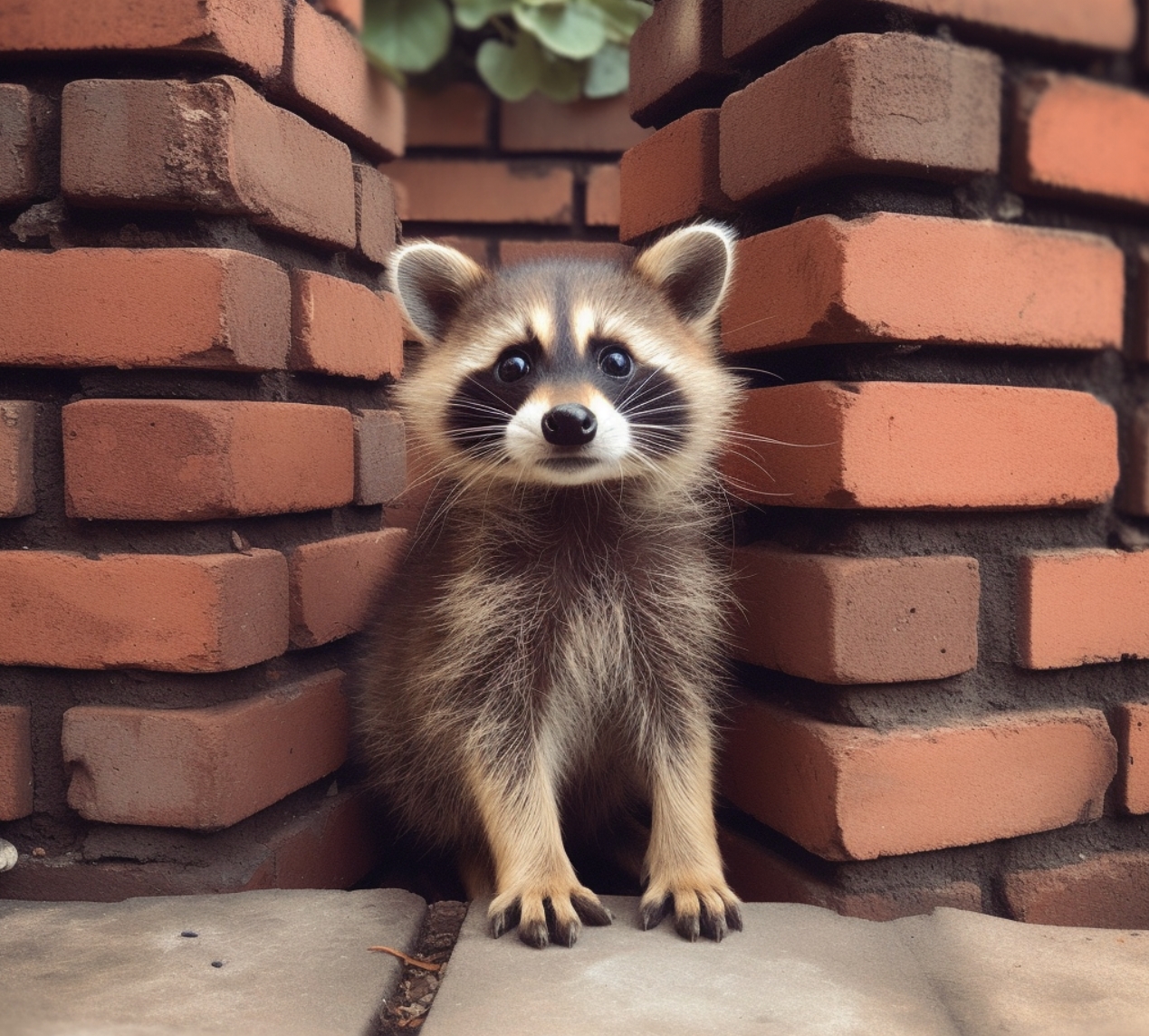Do you know that raccoons, these adorable yet rambunctious creatures, with their unmistakable black-masked faces and ringed tails, live significantly shorter lives in the wild than in captivity? Let’s dive into the intriguing details.
The average lifespan of a raccoon in the wild typically hovers around 3 to 5 years. Yes, it’s somewhat surprising given their robust appearance and dexterity, isn’t it? To put it into perspective, it’s about the same lifespan as a domestic rabbit, but significantly shorter than your pet dog or cat.
Now you might be wondering: What about raccoon kits (baby raccoons)? Well, the fact is, their journey to adulthood is fraught with challenges and many do not survive past their first year. This early mortality significantly skews the overall population statistics.
What about the outliers, the champions of survival? The longest surviving wild raccoon on record clocked a remarkable 16 years! In comparison, raccoons in captivity can bask in their ‘golden years,’ with lifespans stretching to 20 years or more. It’s almost like comparing a hardworking miner’s lifespan to that of a well-pampered king, don’t you think?
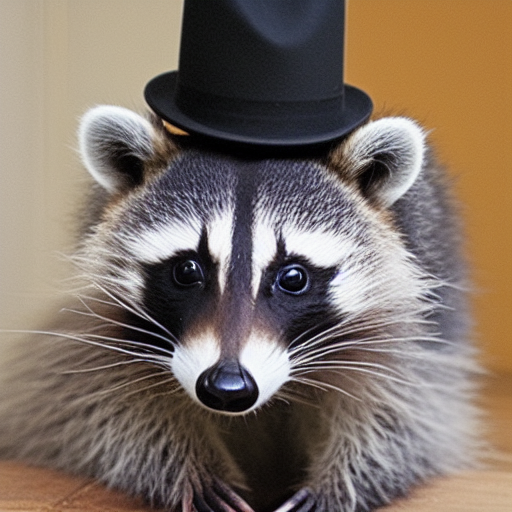
Comparison Table
| Raccoon Type | Average Lifespan | Longest Recorded Lifespan |
|---|---|---|
| Wild | 3-5 years | 16 years |
| Captive | > 10 years | 20+ years |
The divergence in lifespan between wild and captive raccoons could be likened to a battlefield versus a fortress. In the wild, our raccoon friends face relentless trials: hunting, trapping, vehicular injuries, disease, starvation, and predation, to name a few. In captivity, they are shielded from these perils, enjoying a regular supply of food, medical care, and overall better living conditions.
The raccoon life cycle is a fascinating one. Like clockwork, raccoons typically mate once a year. Their calendar is marked with a busy late spring when the female gives birth to a litter of 3 to 7 kits. However, as with many narratives in the animal kingdom, the next generation’s survival rate is relatively low. It’s akin to a gruelling survival reality show where only the toughest make it to the next season.
Let’s review some key points:
- The average lifespan of wild raccoons is 3-5 years, heavily impacted by numerous threats.
- The longest living wild raccoon reached an impressive 16 years.
- In a safer, protected environment, captive raccoons live significantly longer, up to 20+ years.
- Many raccoon kits face a harsh reality, with many not making it to adulthood.
Their fur changes color as they age, from black to gray
Contents
As raccoons age, their fur changes from black to gray. This is because the oil in the hair shafts gets redistributed as they grow older and darker hairs are replaced by lighter ones.
| Method | Description |
|---|---|
| Physical Appearance | Adult raccoons have a distinct black mask around their eyes and a bushy tail with alternating black and gray rings. Juvenile raccoons lack the black mask and have a less bushy tail with fewer rings. |
| Size | Adult raccoons typically weigh between 8-20 pounds and measure between 24-38 inches in length. Juvenile raccoons are smaller, typically weighing between 1-3 pounds and measuring between 12-18 inches in length. |
| Teeth | Adult raccoons have fully developed teeth, while juvenile raccoons have smaller, less developed teeth. |
| Behavior | Adult raccoons are typically more solitary and nocturnal, while juvenile raccoons are more active during the day and may be found in groups. |
| Tracks | Adult raccoons have larger, more defined tracks with five toes, while juvenile raccoons have smaller, less defined tracks with four toes. |
Older raccoons have more wrinkles around their eyes and mouth
The age of a raccoon can be determined by examining its wrinkles. Older raccoons have more wrinkles around their eyes and mouth than younger ones. This is because older animals’ skin loses elasticity and gets thinner, making the underlying muscles and nerves more obvious. Raccoon’s skin also becomes darker with age as it thins out, making these lines even more noticeable on an aged animal’s face.
Some people use pigments to make themselves look younger, but when a raccoon does this, they end up looking like an older adult wearing makeup or trying too hard to hide the wrinkles!
If you want your pet to stay youthful-looking for longer, then regular bathing is critical – if not already done so. Raccoons are no different and should be bathed at least once a month to keep their skin looking healthy and hydrated. This will help reduce the appearance of any lines or wrinkles on their face over time.
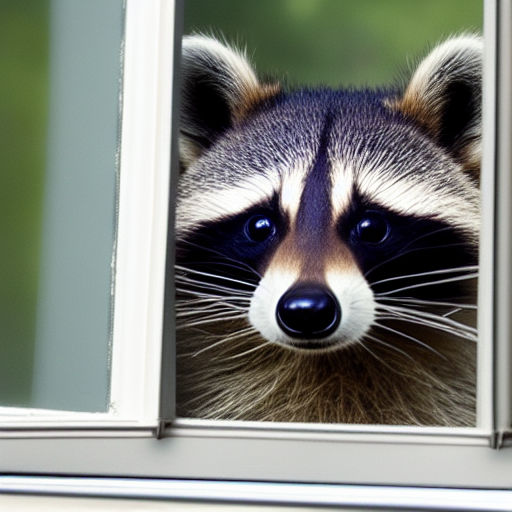
They can survive in cold climates, but their fur becomes thinner and less dense over time
Raccoons can survive in cold climates, but their fur becomes thinner and less dense over time. This can make it harder for them to stay warm, and they may be more susceptible to disease if they live in a colder climate.
Raccoons can be identified by their characteristic “mask” around the eyes
Raccoons are common animals found in North America. They have a characteristic “mask” around their eyes that gives them an endearing and naughty look. Their tails can act as either a fifth limb or rudder, which they steer through dense vegetation while searching for food at night. Although raccoons are typically nocturnal creatures, during the day, they often find shelter in tree hollows or other dark spaces near water sources like rivers and lakes, where they sleep away the daylight hours until sunset approaches again.
What are the common causes of death for raccoons in the wild?
One of the most common Grim Reapers for these agile critters is human intervention in the form of hunting and trapping. Just imagine the raccoon’s world as an endless game of hide-and-seek, where being found could mean the end. Raccoons are often hunted for their fur, and trapped as a method of pest control, making this a prominent cause of mortality.
Mortality Causes in Wild Raccoons: Comparative Analysis
| Cause of Death | Threat Level |
|---|---|
| Hunting and Trapping | High |
| Vehicular Injuries | High |
| Disease | Very High |
| Predation | Moderate |
| Malnutrition | Moderate |
| Starvation | High |
Now, have you ever had that heart-stopping moment when an animal dashes across the road right in front of your car? This happens more frequently than we might think. Vehicular injuries, often from being hit by cars, form another significant cause of raccoon fatalities.
As with us humans, diseases are a bane for raccoons. Raccoons are susceptible to various diseases, including rabies, leptospirosis, and notably canine distemper. Canine distemper might sound like a dog-exclusive issue, but it’s a deadly adversary for raccoons and stands as the leading natural cause of death.
Raccoons also live in the ‘eat or be eaten’ world of nature, and they’re not always the ones doing the eating. Their predators, which include larger mammals like cougars, bobcats, wolves, coyotes, and even aerial threats like great horned owls, contribute to raccoon mortality rates.
Picture a time when you were really hungry and your fridge was empty. This is a daily struggle for wild raccoons. They can wander out of their territory searching for food, resulting in malnutrition. Young raccoons, with smaller fat reserves, are especially vulnerable during seasonal food shortages.
Starvation, related to malnutrition, is another leading cause of death. Food scarcity due to environmental factors or an inability to find food can lead to this tragic end.
Let’s consider these critical points:
- Hunting and trapping by humans stand as principal causes of raccoon mortality.
- Vehicular injuries are common due to their active night lives.
- Diseases, particularly canine distemper, contribute significantly to raccoon deaths.
- Predation by larger mammals and birds of prey is a constant threat.
- Malnutrition and starvation are ever-looming dangers, particularly for young kits.
Interestingly, the greatest mortality rate among raccoons occurs during their second year of life, painting a sobering picture of their survival rate. Additionally, raccoons can be carriers of zoonotic diseases that can be transmitted to humans, adding another dimension to their tough life in the wild.
FAQs

How big is a 4-week old raccoon?
A four-week-old raccoon is typically about six inches long and weighs around five ounces. They are developing their signature black “mask” and have good fur. Their eyes will be open, but they can’t see as well as adult raccoons yet. They are still nursing from their mother at this age but will start to eat solid food too.
How big is a 12-week old raccoon?
A twelve-week-old raccoon is typically about ten inches long and weighs around one pound. They have significantly more fur than younger raccoons, and their mask will be fully developed. Their eyesight has improved dramatically, but they are not yet ready to be on their own.
Can a 3-month-old raccoon survive on its own?
A three-month-old raccoon is typically about 12 inches long and weighs around two pounds. They have a full coat of fur, and their mask is fully developed. Their eyesight is now good enough that they can survive on their own. However, they are still learning to find food and care for themselves, so they are not yet fully independent.
Can an adult raccoon be domesticated?
While it is possible to tame an adult raccoon, it is much more complex than taming a young one. Adult raccoons are more likely to be aggressive and less likely to bond with humans. If you decide to try taming an adult raccoon, make sure you consult with a professional first.
How old are raccoons when they leave their mom?
Raccoons are typically ready to leave their mother around 12 weeks old. However, some may stay with their mom longer if they are not fully independent yet. Conversely, some young raccoons may be forced to leave their mom earlier if she cannot provide them with enough food or shelter. Raccoon mothers are very caring and will often help they’re young learn how to find food and care for themselves before leaving home.
What do 7-week old raccoons eat?
Raccoons at seven weeks old are starting to eat solid foods, but they will still nurse from their mother. Their diet will mainly consist of insects, fruits, and vegetables. As they get older, they will start to eat more meat. Raccoons are omnivores and can adapt to various diets so that you can feed them a wide variety of food items. However, it is essential to make sure that they have access to fresh water at all times.
How long are raccoons enceinte?
A female raccoon is typically pregnant for 63 days. However, there is a lot of variation in gestation periods among different raccoons, so it is best to ask a veterinarian if you are unsure when your particular raccoon became pregnant.

